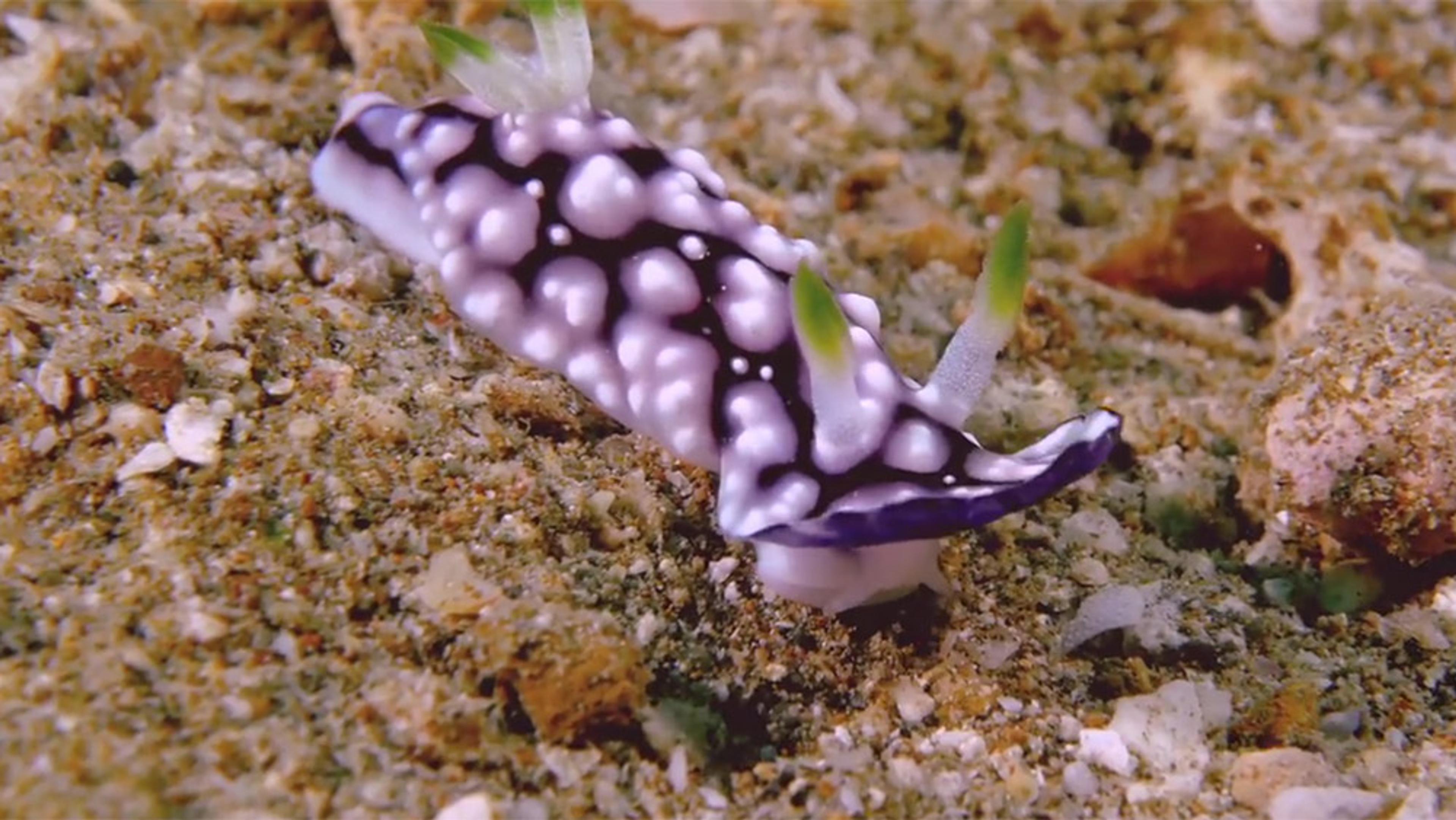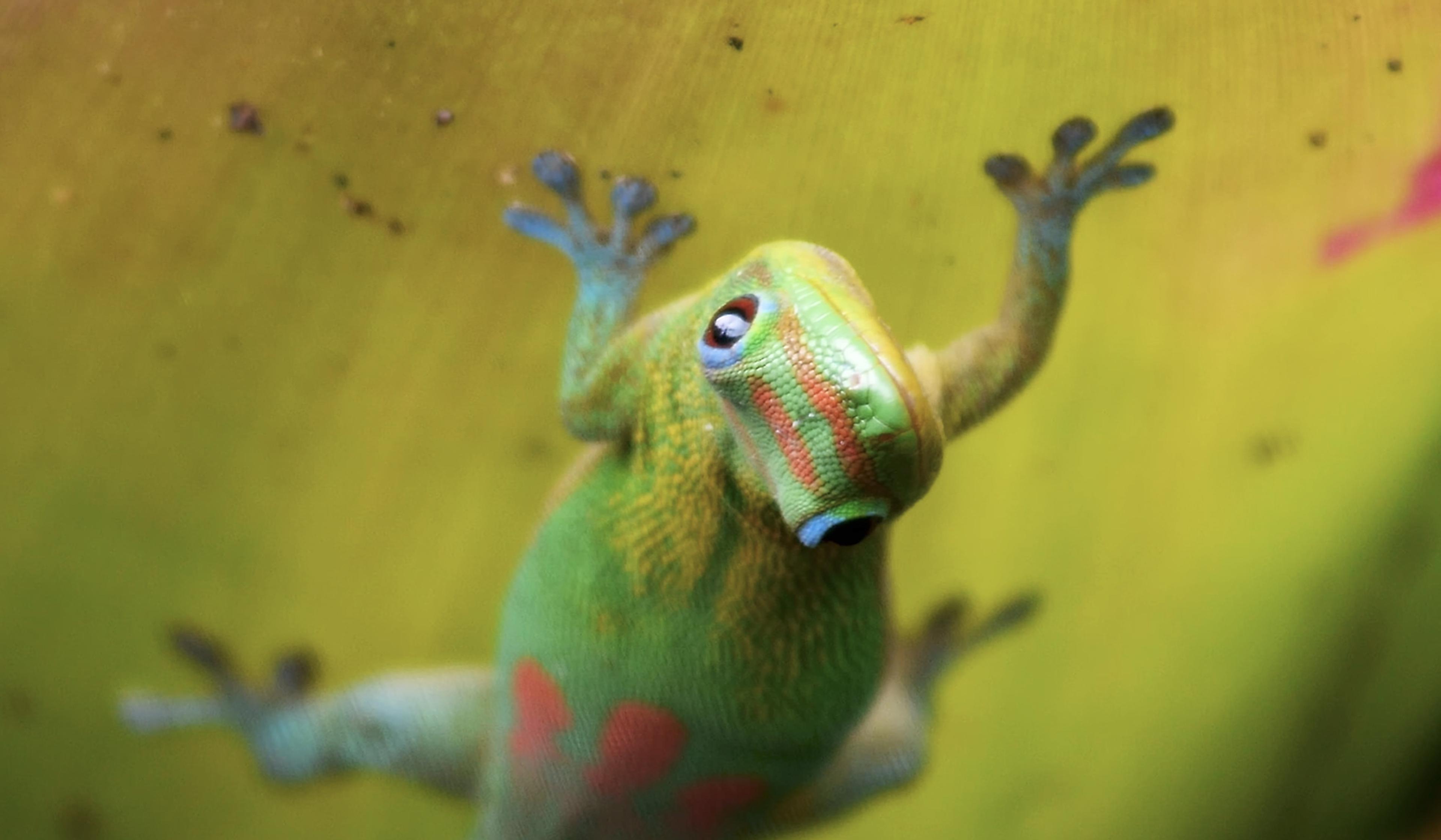It’s common lore that chameleons change their colours to blend in with their environment and elude predators, but in reality, chameleons’ baseline earth-tones provide camouflage, while their more brilliant colours communicate their physiological state and intentions to other chameleons. These colour shifts result not from pigments as previously thought, but from changes in microscopic salt crystals in the chameleons’ skin. At the University of California, Berkeley, researchers are attempting to harness chameleon skins’ powers to create new synthetic materials.
How chameleons change colours not to blend in, but for nearly opposite reasons
Producer: Jason Jaacks
Website: Deep Look

videoEvolution
When is a leaf not a leaf? When it’s got six legs and a face
4 minutes

videoBiology
Glow worms mimic stars, creating a stunning faux night sky in a New Zealand cave
4 minutes

videoEvolution
How multicoloured side-blotched lizards put game theory into evolutionary action
3 minutes

videoBiology
Far from sluggish: the remarkable sea creature that weaponises its dinner
4 minutes

videoMathematics
After centuries of trying, we’ve yet to arrive at a perfect way to map colour
20 minutes

videoBiology
How the world’s richest reds are derived from an innocuous Mexican insect
5 minutes

videoKnowledge
Can you know everything about colour if you see in black and white? A thought experiment
5 minutes

videoEvolution
The many ways a lizard tongue sticks, grasps, pinches and plops – in slo-mo
6 minutes

videoBiology
The key to geckos’ unrivalled climbing skills isn’t sticky feet. It’s subatomic
4 minutes